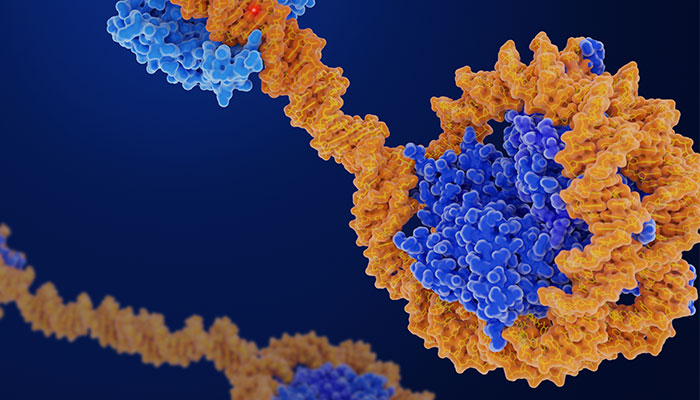HOW CAN WE HELP YOU? Call 1-800-TRY-CHOP
In This Section
Can a New High-throughput Array Accelerate DNA Methylation Characterization?

CHOP researchers have developed a cost-effective tool that will facilitate the epigenome analysis of a vital model organism, giving an in-depth view into the basis of health and disease.
The findings:
Researchers from Children's Hospital of Philadelphia and the University of Pennsylvania have developed a cost-effective tool that will facilitate the epigenome analysis of the mouse — a vital model organism — giving researchers an in-depth view into the basis of health and disease. The first genome-wide methylation bead-based microarray for the mouse contains more than 296,000 probes representing the diversity of mouse DNA methylation biology.
Why it matters:
Epigenetics, the study of heritable phenotype changes that do not involve alterations in the DNA sequence, plays a role in virtually every aspect of health and disease. Since the 1980s, this revelation has given rise to a growing field, illuminating vital insights into a variety of diseases, such as cancer, which is now known to be driven by both genetic and epigenetic errors.
This new high-throughput genomic array offers an unparalleled look into the mouse epigenome and includes markers for an extensive list of biological features and processes, such as genomic imprinting, aging, cancer, variably methylated regions, germ cell development, tissue specificity, X-linked probes, and epigenetic clocks.
It will allow scientists to interrogate methylation more quickly and more deeply than previous methods. This tool enabled the research team to develop an atlas of DNA methylation profiles across more than 1,200 samples, representing diverse cell types, strains, and pathologies. Prior to this study, mouse DNA methylation data were available but not profiled on the same assay platform. A rich resource, the atlas offers scientists a central repository for this critical information. Additionally, the array data analysis has been supported by the open-source bioinformatics tool SEnsible Step-wise Analysis of DNA MEthylation BeadChips (SeSAMe), also developed in this study.

Wanding Zhou, PhD
Who conducted the study:
First and co-corresponding author Wanding Zhou, PhD, is a computational scientist in the Center for Computational and Genomic Medicine and an assistant professor of Pathology and Laboratory Medicine in the Perelman School of Medicine at the University of Pennsylvania. Also contributing were researchers from Dr. Zhou's Lab including Waleed Iqbal, Wubin Ding, Solmoe Lee, and Ethan Moyer; University of Pennsylvania; and the Van Andel Institute.
How they did it:
As part of their validation process, the team re-ran experiments during the early days of epigenetics research, revealing fidelity to the original findings of more than 40 years ago and achieving results much faster. According to VAI chief scientific officer Peter Jones, PhD, an internationally renowned epigenetics pioneer and a study co-author, the new array is "an absolutely essential tool that will provide a bridge to new breakthroughs. Its speed, depth, and efficiency will allow us to accelerate discovery by identifying genetic and epigenetic changes more quickly and in greater detail than ever before."
Quick thoughts:
"We learned many lessons from the current and previous generations of the human arrays and have improved the overall quality of probe design," said Dr. Zhou, lead author of the study. "For example, we optimized the probe selection to cover the diverse biology of DNA methylation in mice while minimizing the chance of probe misuse and artifact. The array also features probe sets that will enable comparative epigenome analysis between humans and mice as well as among other rodents."
Where the study was published:
The study appears in Cell Genomics.
Want to learn more?
Read more in this press release or this preview.


